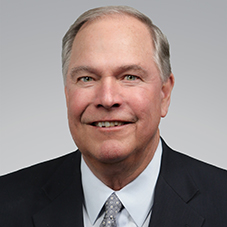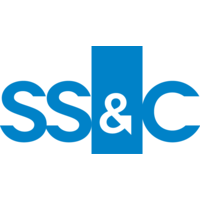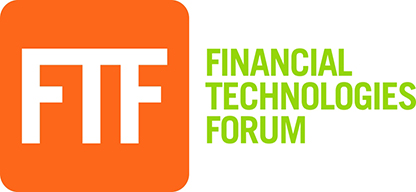The chairman and CEO of SS&C Technologies points to history as a guide for evaluating the impacts of artificial intelligence.

Grygo is the chief content officer for FTF & FTF News.
One of the keys to understanding the full impact of a disruptive technology is to use history as a guide. A case in point is the phenomenon of A.I.-based technologies that are promising to overhaul or at least enhance the systems that run the front-, middle-, and back-offices of financial services firms working in global capital markets.
SS&C Technologies had a front row seat to past major IT revolutions and is in the catbird seat now to watch the ripples that artificial intelligence is making in the securities industry. This is particularly true because SS&C got its start in 1986, says Bill Stone, founder, chairman, and CEO of the systems, services, and software provider for securities operations and the health care industry.
Stone, Anthony Caiafa, chief technology officer (CTO) for SS&C, and Eamonn Greaves, global head of sales for SS&C, met last week with a gathering of journalists in New York City. The wide-ranging discussion frequently returned to the impact that A.I. is having on securities operations.
For SS&C, the promise of A.I., along with the related technologies of robot process automation (RPA) and machine learning (ML) inspired the provider to acquire Blue Prism in March 2022. “We had to have bulk,” Stone says of the $1.6 billion acquisition. SS&C Blue Prism is now offering the industry ways to implement agentic A.I., among other solutions.
A.I. has also enabled SS&C to create 3,500 “digital workers,” and to explore new links among some of the services, systems, and software it has added to its war chest of offerings, following approximately 80 acquisitions.

Bill Stone
Stone says that despite the enthusiasm for A.I., it still has to prove its value. He has witnessed numerous technological waves, starting with the emergence of mid-range minicomputers, including those from Digital Equipment Corp. (DEC) and its VAX/VMS systems, Prime Computers, and Data General — to name a few from that era. The minicomputers were challenging the dominance of mainframe computers, particularly those from IBM. Later, workstations challenged minicomputers, and amid all of that, IBM also spurred another IT revolution via the launch of the IBM PC. And Apple Computer, of course, had great success with the Macintosh line.
While the hardware was evolving quickly, there were the operating systems waves and wars involving IBM and Microsoft, leading to multiple variants of DOS and later Microsoft Windows. While Microsoft fought many Windows battles against other operating systems, IBM also pushed OS/2, which did not survive. Amid those battles, Unix and its variants gained ground and facilitated the onset of Linux.
I covered these exciting hardware, software, and systems battles, including those market data systems wars on Wall Street, and I am still amazed at how quickly IT advanced from the mid-1980s onward. (I have a mini-museum at home of old PCs, floppy and hard disks, software CDs, and a word processor that I hope to auction off in my dotage.)
Stone says the lesson to be learned from all of these technology tidal waves is that when IT dramatically drives down the costs related to securities transactions and operations, it is proving its value and delivering what the market wants. “A lot of the magic of technology is how it helps everybody,” Stone says. “That’s how technology really changes what happens.”
The advances in IT also paved the way for new ways for front- and back-office operations teams at financial services firms to support options, futures, and mortgage-backed securities, for example, Stone says. To support its clients’ changing demands, SS&C also hired human expertise via front-, middle-, and back-office professionals who provide ongoing and new support.
In addition, acquisitions have added to SS&C’s IT resources, such as when SS&C purchased DST Systems, Inc., an advisory, technology, and operations outsourcing company, in 2018. That transaction made SS&C the owner of 300,000 square feet of raised floor data center support, Stone notes. SS&C also acquired approximately 13,000 new global clients via DST.
I asked the company officials present if A.I. would help SS&C with its integration support for the company’s many software offerings, systems, and services.
“We have a lot of integration going on already,” Caiafa says. “We use a lot of the common technology that comes with our acquisitions.” A.I. has proven to help evaluate code, which can then be applied to building modules that will then help SS&C with integration, Caiafa says.
I also asked for comments about the layoffs of Ops teams at an unidentified firm where senior management may have jumped on the A.I. bandwagon too soon.
In response, Stone asks: “How was the firm being managed before they did it?” Defaulting to layoffs is not a sign of good management, he notes. Layoffs are only done when it’s necessary, and, over the years, SS&C has had many ups and downs in headcounts based on economic realities, he acknowledges.
In addition, knee-jerk layoffs can backfire and leave firms without enough staff to support operations. “They’ll show up at our door,” Caiafa says about firms that leave themselves short-staffed.
As the gathering was winding down, I asked Stone about a new area of concern on the horizon for Ops teams – digital asset custody. “That’s why we bought Calastone,” Stone quips.
In fact, last week, SS&C completed its acquisition of Calastone from private equity giant Carlyle for a purchase price of approximately £766 million (US $1.03 billion), subject to certain adjustments, SSC officials say. Calastone has a global funds network and offers technology solutions to the wealth and asset management industries.
“Effective immediately, Calastone’s team of 250 employees will join SS&C Global Investor & Distribution Solutions,” according to the official announcement. “They will report to General Manager Nick Wright. Calastone has an extensive global network, with offices in London, Luxembourg, Hong Kong, Taipei, Singapore, New York, and Sydney.”
 The official announcement also notes that Calastone’s solutions “complement SS&C’s offerings in fund administration, transfer agency, A.I., and intelligent automation. The combined team will deliver a unified, real-time operating platform to reduce cost, complexity, and operational risk for fund industry participants worldwide. Clients will benefit from enhanced distribution, investor servicing, and operational scalability.”
The official announcement also notes that Calastone’s solutions “complement SS&C’s offerings in fund administration, transfer agency, A.I., and intelligent automation. The combined team will deliver a unified, real-time operating platform to reduce cost, complexity, and operational risk for fund industry participants worldwide. Clients will benefit from enhanced distribution, investor servicing, and operational scalability.”
So, the technology waves continue, and we will watch this space for any news regarding the care and maintenance of digital assets and any interesting applications of A.I.-based technologies.
Need a Reprint?